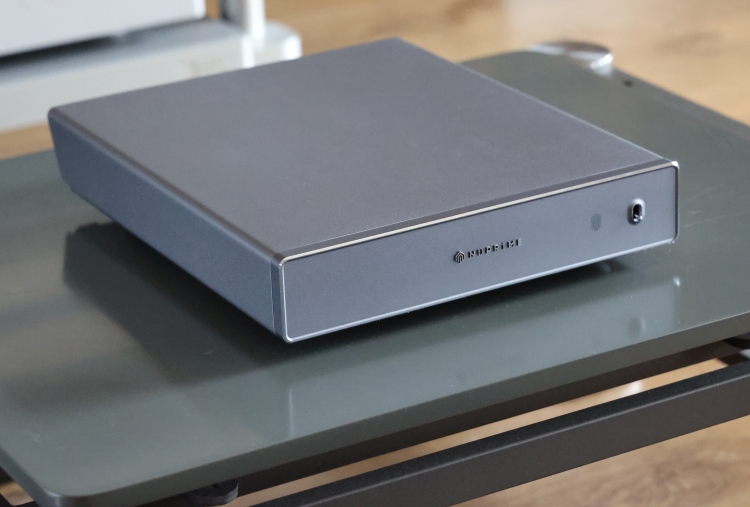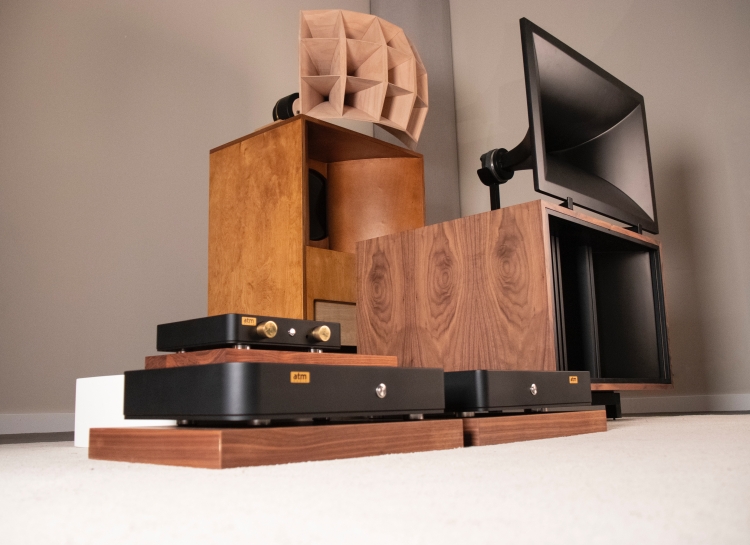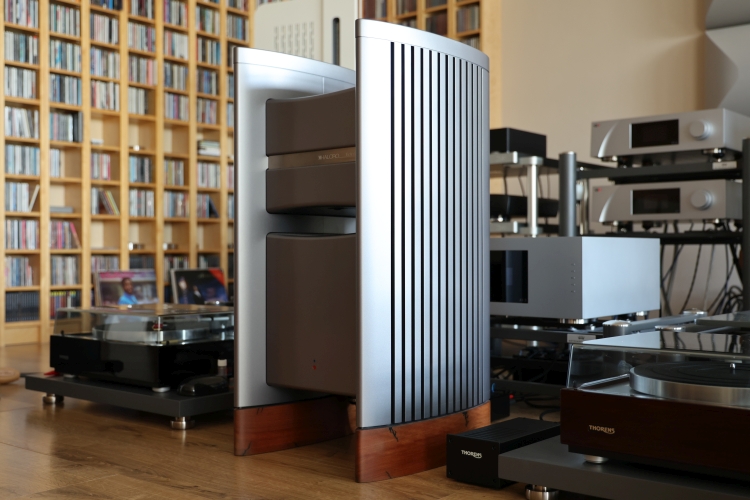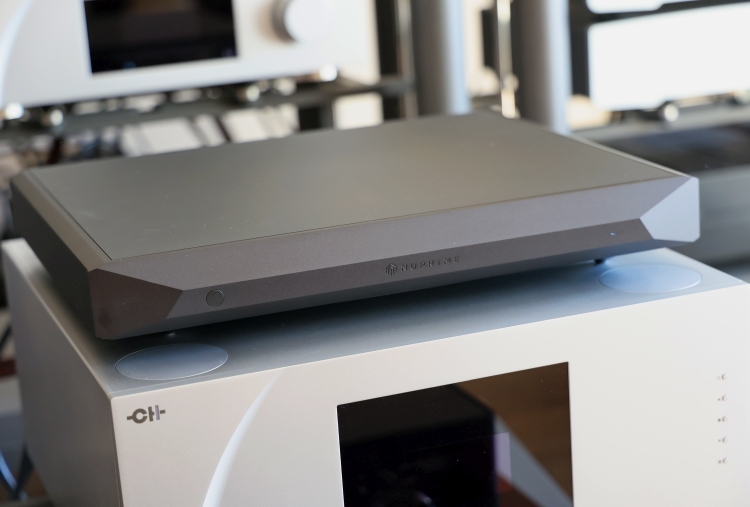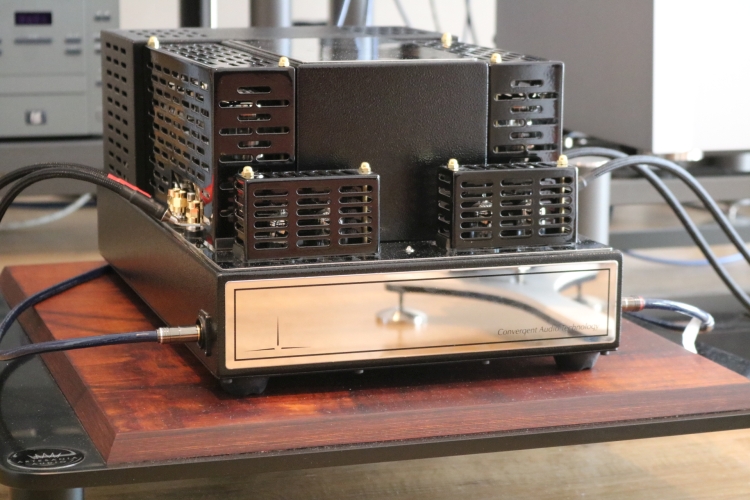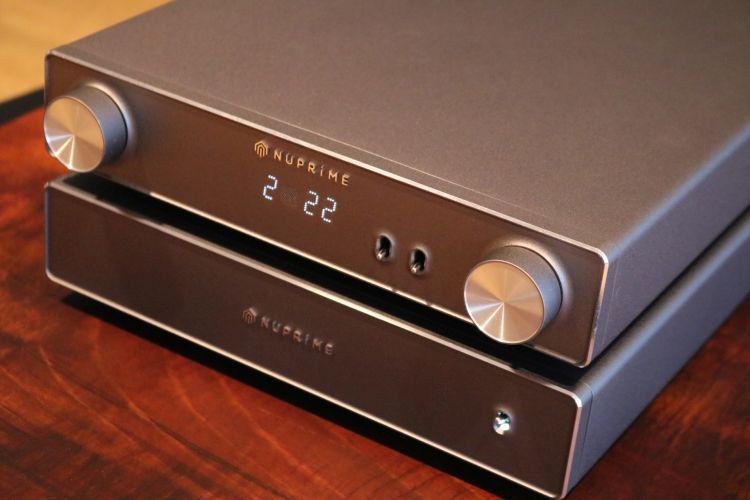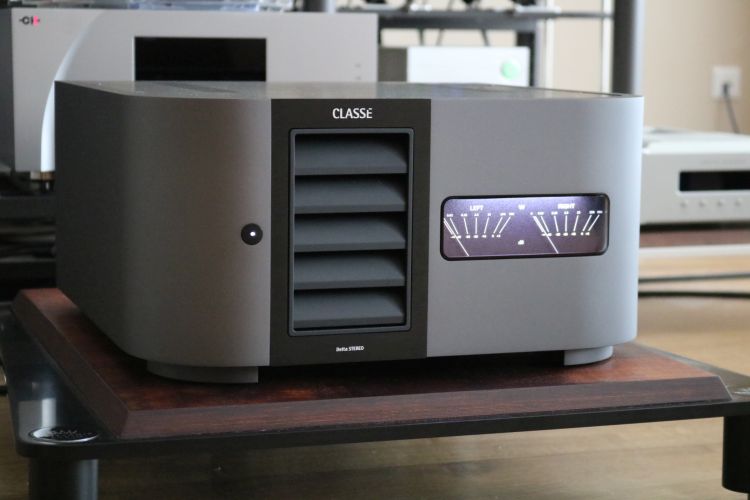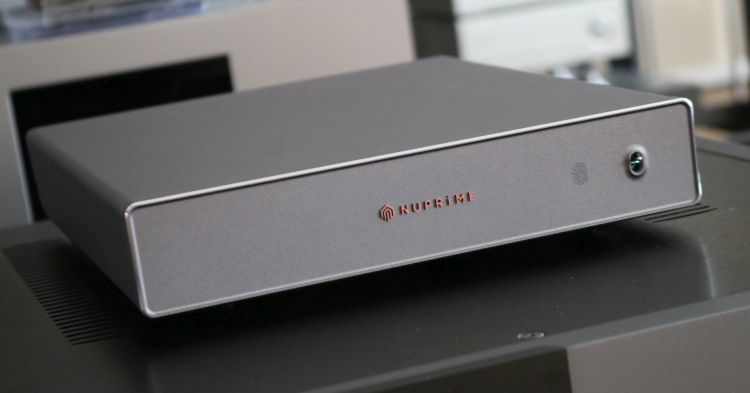atm-audio EPM-700 class-D power amplifier with Korg Nutube triode input buffer
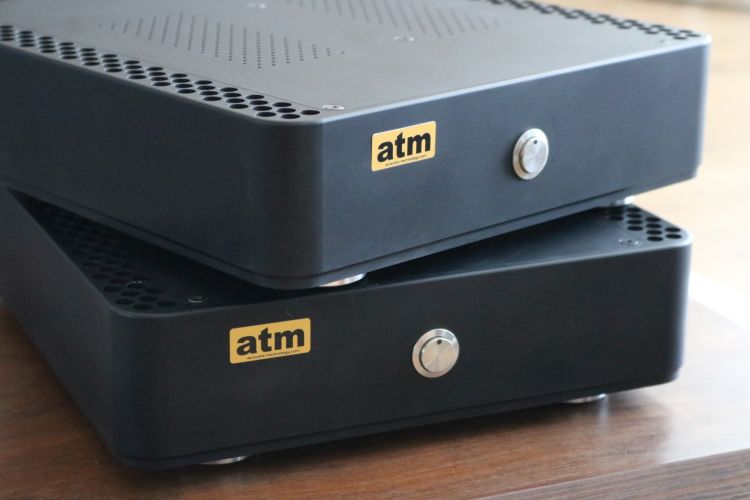
Interlinks
To get the best overall balance from the EPM-700’s with the widest range of loudspeakers, they are best coupled with transparent and open-sounding interlinks. In that category, the CH Balanced Link was a match made in heaven.
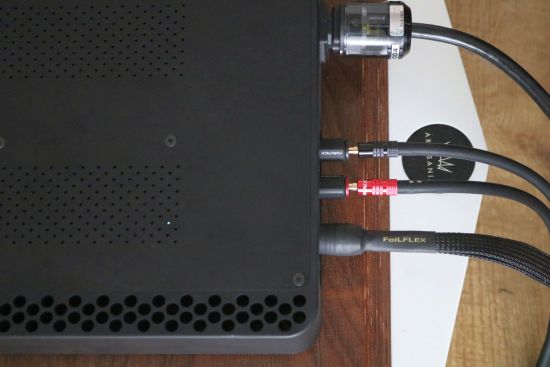
Foilflex poses an interesting alternative that is every bit as neutral and transparent and unveils a similarly impressive amount of information at a much lower cost. The main advantage of the CH cable over the FoilFlex is more of a free-flowing nature and a more organic feel in the midrange.
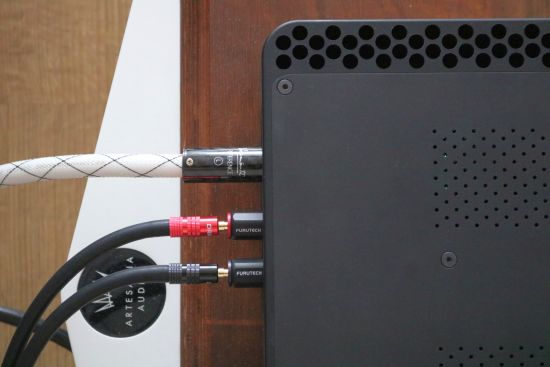
The Vermouth Reference interlinks also worked surprisingly well, adding some extra color and substance as well as a more sonorous bass to combine into a very musical and engaging delivery. The Vermouth is not short on detail but its voluptuous sound can push the EPM-700s’ already relaxed sound too far, depending on the rest of the system’s balance.
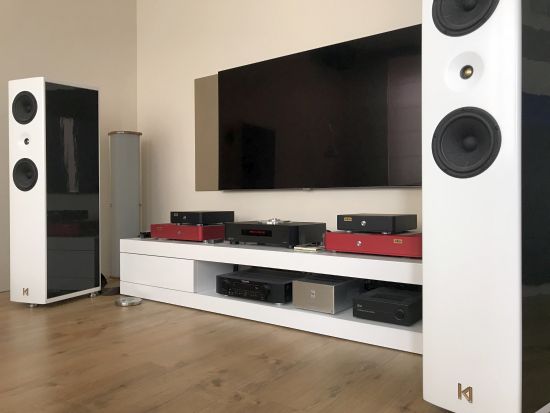
Compared with EPM-50 using Kromas
Now that it was established that the EPM-700’s do a very good job of sounding like a Class-A/B amplifier and, in some aspects, even a Class-A amplifier, it was time to compare them directly to the EPM-50’s which are, of course, actual Class-A amplifiers. For this comparison, I changed scenes to the secondary listening room where the EPM-50 Class-A monos were still set up and connected to the Kroma Audio Carmen loudspeakers. After having listened to a few well-known tracks, with much anticipation, I swapped the EPM-50’s for the EPM-700’s and cued up the same tracks. Would they sound similar? Or actually quite different?
As it turns out, the amplifiers do have similar signatures but they are also different. Surprisingly, the upper midrange and treble are remarkably similar. This is surprising because one amp is Class-A while the other is Class-D and the latter class has never been very good in the treble. Of course, Hypex Ncore is to credit for this. As I already heard with the Mola Mola Kaluga monos, this technology produces the very best treble that I have heard from a switching amp. The major difference is in the bass and the lower midrange. To my ears, the EPM-700’s have a neutral response with a relaxed and smooth touch and a pleasant warmth. As such, I would absolutely not label them as cool or factual. Still, the big Class-A beasts sound considerably creamier and warmer and even more lush and relaxed. At first, this made me wonder which of the amplifiers I preferred but after a moment of accustomizing the EPM-50’s seduced me with their lusher and richer sound and their more natural flow. There’s just an immensely organic quality to these amps’ delivery that the EPM-700’s cannot match.
The EPM-700’s counter with speedier transient behavior, better articulation and more responsiveness to speed changes which all combines into great PRaT. Apart from speed, the EPM-700’s bass is just also incredibly convincing in its stature, agility, stability and tonality. With the EPM-50’s, the bass is richer and sweeter which for some people may be precisely what they are after when in pursuit of “typical” Class-A sound. Personally, however, I feel that the EPM-700’s more articulate low frequencies sound more realistic. And as regular readers will know, for me, realistic bass translates to a more realistic overall delivery. Other listeners may focus more on timbral richness and bloom. And yet another group may strive for getting tube-like-sound from a transistor design. While it is debatable what constitutes tube sound, for many people this means a big, sweet and relaxed sound. And these people will find what the EPM-50’s do to be more realistic or more desirable. These differences aside, both models achieve the very same goal of putting the music first.
That both models manage to have such a similar sound signature is quite baffling and this says a lot about our prejudices regarding Class-A, Class-D and amplifier design in general. atm-audio’s Jesús Alejos Pérez clearly has a vision for how he wants his amplifiers to sound and evidently he achieves this irrespective of the amplification principle.
No doubt, the Korg Nutube triode input section also has a hand in this. While this section does not transform the amplifiers into EPM-50’s, what they do is to take away the last remaining hint of synthesis, that sense of listening to an electronic circuit, to leave only pure music.
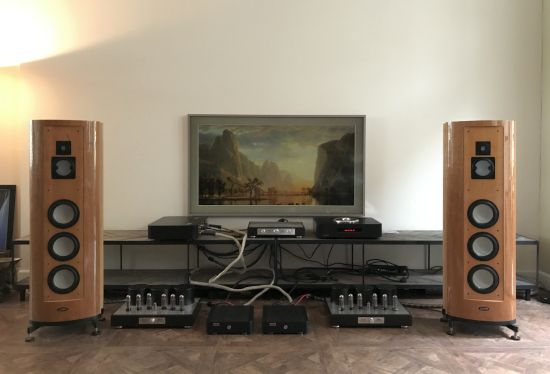
Listening – Ayon
Before wrapping up this review I decided to pay audio buddy Jan, aka “Meneer Buis” a visit with an EPM-700 under each arm. At this moment, Jan uses the Ayon Falcon-S loudspeakers which are very revealing and transparent and also very easy to drive. Using an Ayon CD-T CD transport with Ayon Sigma DAC as sources, the EPM-700’s were connected via Straightwire Crescendo II interlinks and Driade Flow 405 speaker cables. Jan normally uses WLM (now owned by Trafomatic) tube pre- and power amplifiers but these use cinch connections only while the EPM-700’s use XLR only. Fortunately, the Sigma DAC can also drive power amplifiers directly which is what we did with the EPM-700’s, after having bent the ridiculously stiff FIM Gold XLR cables into position.
In this system, the Spanish duo has stunning resolution and refinement. They really are a lot faster, more articulate and precise than Jan’s WLM combo. Although the sound was still gentle and sweet, on balance, it could do with a little bit more “meat on the bones” and the bass was now arguably even a little lean. I should note that the last situation is a bit of an “apples and oranges” comparison because I’m comparing a situation with a DAC feeding a tube pre- and power amplifier to one where the DAC feeds switched power amplifiers directly. But even so, this puts things perfectly into perspective.
Perspective
With the Kroma Carmens, I obtained some absolutely magical results with a balance that was quite lush and warm. The Xavians were less lush but provided a more dynamic and exhilarating, edge-of-seat, performance while remaining utterly lifelike and musical. The Ayon speakers, finally, tilted the balance over to the slightly cool side.
This tells me two things. First: the EPM-700’s can swing both ways of the spectrum, depending on the speaker pairing. Second: they definitely prefer to be matched with unrestrained/enthusiastic and expressive speakers.
With the inherently cool-sounding Ayon speakers, the WLM tube preamp and power amp sound warmer and sweeter and thus make for an emotionally more compelling performance. But they are also a lot softer, a lot less well-paced and a lot less well-focused in terms of imaging and once we had heard the tighter and much more energetic EPM-700’s, the WLM’s just weren’t satisfying anymore. I have a sneaking suspicion that if we had the possibility to connect Jan’s tube preamp to the EPM-700’s, the results might have been absolutely spectacular.
Jan is a real tube-aficionado who has repeatedly said to have no love for a “Torrenbak” which is a Dutch derogative term for a transistor amplifier. Yet, he had to admit that the EPM-700’s sound remarkably great, not only for a Class-D design but for transistors in general. Maybe it was the spur of the moment but I swear that I noticed Jan contemplating owning a transistor design again someday.
Conclusion
While the Korg Nutube triode input section does not transform the EPM-700’s into EPM-50’s they do share a large chunk of what makes the full Class-A models so special. Both models seem to be tuned to never sound forced or edgy and both models have a smooth and absolutely non-synthetic, non-electronic delivery with a completely natural timbre.
They have the superb bass and linearity that comes naturally to with the Class-D territory but when also taking the superbly fluid and refined treble into account and adding their sweetness and fabulously natural timbre, these hybrid amplifiers deliver up to 500 Watts of what closely resembles actual Class-A sound from a tiny cool-running box.
Their unforced delivery does favor partnering with expressive loudspeakers but when the match is right, these amplifiers turn in an utterly lifelike and superbly involving performance.
External Links
Manufacturer: atm-audio
